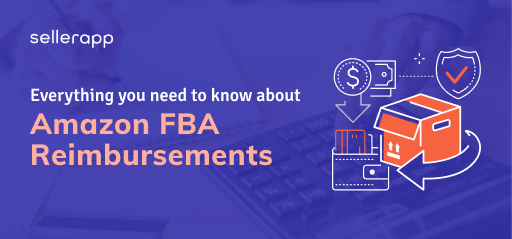Amazon shipping delays explained: How to minimize its impact

Amazon has long set the gold standard for speedy, reliable shipping. Especially through its Prime service. However, even the best systems can fail under certain circumstances.
Amazon shipping delays are super frustrating because customers tend to rely on Amazon because of their Prime feature that promises one-day delivery (same day or two days in certain cases).
Thus, customers seeing their much-anticipated package stuck with a “delayed in transit” status can potentially pivot them to Amazon’s competitor marketplaces.
They don’t just frustrate customers; they can also impact sellers, customer satisfaction, and bottom lines. In some cases, buyers can even expect an Amazon shipping delay refund when the Amazon delivery timelines aren’t met.
In recent years, rapidly growing consumer demand, unpredictable weather, and logistical issues, especially during peak seasons such as Prime Day or Black Friday, have given Amazon a bad rep for overpromising and underdelivering. Amazon shipping delays are a common phenomenon these days.
Whether you’re dealing with an “Amazon delayed-not-yet-shipped” update or with the headache of delayed shipping on Amazon during a major sale event, these disruptions can cause serious ripple effects. The best thing you can do to deal with it is to educate yourself on Amazon delivery delays and plan well enough to avoid these issues.
In this article, we’ll explore the complexities of Amazon shipping delays by understanding the impact, causes, and potential solutions that will help your business operate more smoothly.
What are Amazon shipping delays?
An Amazon shipping delay happens when packages ordered by customers through the Amazon platform take longer to reach the anticipating customer than the estimated timeline.
As mentioned earlier, the reasons for that delay can be high order volume, logistical challenges, bad weather, or any unexpected event. Any delivery status that says ‘Amazon delayed not yet shipped’ or similar falls under this category. This means the package is still within the shipping network, but a shipment bottleneck was encountered.
For FBM (Fulfillment by Merchant) sellers, these Amazon shipping delays, if left unchecked, could negatively impact your sales momentum, overall profitability, and ultimately affect your Amazon Seller Central account health. But in this case, you have the freedom to plan and rectify these gaps.
Most importantly, shipping delays drastically affect sellers who use FBA for their fulfillment. You will have no choice but to coordinate with Amazon to resolve any shipping issues. However, when Amazon delays shipping of an FBA fulfilled item, it will not affect your Account Health metrics, such as Late Shipment Rate (LSR) or On-Time Delivery Rate (OTDR)

Amazon’s delayed shipping policies ensure that sellers are not penalized for delays beyond their control in the FBA process.
What does ‘Amazon package delayed in transit’ mean?
“Package Delayed in Transit” means that your shipment faced an unforeseen roadblock that led to a slowdown while the package moved between facilities. Thus, reaching the next checkpoint takes longer than the scheduled time.
The journey of the package resembles that of a relay race. It moves through several hands (warehouses, sorting centers, local delivery stations) before reaching the customer. A transit delay signals that something went wrong somewhere along the process. At this stage, the package is still on its way, but the estimated delivery window has changed.
Why are Amazon shipments delayed?
There can be a myriad of reasons why Amazon shipping delays occur. Do not worry; we have some on-point solutions for these setbacks as well. Here are some of the most common Amazon delayed shipping causes:
1. Peak season Amazon fulfillment delay
As mentioned in the introduction, seasonality is a major factor that causes Amazon shipping delays. This is primarily due to the large volume of orders during days like Prime Day and Black Friday or during the time customers are on a festival shopping spree, like during the Fourth of July or Christmas.
Millions of customers flock to Amazon expecting a speedy delivery, which adds up to an extraordinary volume of orders within a short window of time. This sudden surge puts immense pressure on Amazon’s fulfillment centers, or even third-party shipping carriers, and customer service teams to resolve the obvious friction.
Amazon delivery delays can also occur due to seasonal demand surges, such as spring break or back-to-school season. The unpredictable increase in demand for certain products (be it vacation essentials or school supplies) often catches the system off guard. That creates a shortage of workforce or solutions, despite forecasts and planning. This snowballs into massive Amazon shipment delays.
While Amazon constantly works on improving its seasonal preparedness via
- Advanced demand forecasting,
- Seasonal hiring surges, expanding fulfillment infrastructure,
- Strengthening last-mile delivery networks.
The sheer magnitude of seasonal demand surge continues to be a lingering challenge.
2. Amazon logistics delay
A complex logistics network can involve multiple stages, like order processing, picking, packing, and shipping. If there’s any disruption or inefficiency at any step of the process can create a bottleneck, such as inventory shortages, equipment malfunctions, or transportation issues.
Amazon’s fulfillment network is massive, involving several critical divisions:
- Order processing,
- Picking,
- Packing, and
- Shipping.
However, even small disruptions at any particular stage can create a domino effect through the system, causing inevitable delays.
For instance, inventory shortages during rush hours at a fulfillment center mean that the product might not be immediately available for quick fulfillment. Similarly, equipment-level malfunctions, such as conveyor belt failures or barcode scanning issues, can slow down the processing of orders, leading to backlogs and creating Amazon shipping delays.
Transportation issues like truck shortages, mechanical failures, or delays at sorting hubs can also cause an Amazon shipping delay. Because Amazon’s logistics are deeply interconnected, well-planned to fit into a short delivery time window, lagging in one area, no matter how minor, can create a bottleneck leading to failure in timely delivery.
3. Bad weather Amazon package delays
Adverse weather conditions, such as hurricanes, hailstorms, or snow, are major contributors to Amazon shipping delays. These natural calamities can severely dismantle critical transportation routes for Amazon deliveries across air, sea, and land.
When bad weather strikes, cargo flights may be grounded, shipping vessels may be delayed at ports, and trucking routes may be shut down due to hazardous road conditions. Amazon prioritizes safety for the workforce, and often suspends the process until it’s safe to resume creating significant Amazon delivery delays.
For example, airports may reschedule cargo flights for safety reasons, causing a ripple effect and delaying the movement of goods between fulfillment centers and regional hubs. As a result, customers may experience Amazon shipping delays even after the weather conditions clear up and the delivery routes are restored; the delivery backlogs take some time to solve.
4. Supplier issues causing Amazon delivery problems
As a seller, supplier delays can be one of the biggest challenges to your delivery timelines, causing Amazon shipping delays. Even when you’ve planned ahead, issues like supply chain disruptions, customs delays, or transportation shortages can inevitably disrupt your Amazon fulfillment timelines.
Amazon delayed shipping can occur irrespective of your choice of fulfillment— FBA or FBM. This may drive customers to look for an Amazon shipping delay credit. It is a compensation Amazon may offer customers when their order doesn’t arrive within the promised delivery date.
Quality control problems are also included within this category of delay causes. If your supplier’s products don’t meet your standards or Amazon’s requirements, shipments can be rejected, requiring rework or replacements, which causes further Amazon shipping delays.
This not only impacts sales but can damage your reputation, especially during peak seasons. We urge you to be cautious about quality checks, as this, unlike weather conditions or demand surges, can be avoided when you strategize well.
Set clear expectations with suppliers, allow extra time in your supply chain, and have backup plans ready to minimize these risks. Strong supplier management is key to keeping your Amazon business running smoothly, despite these disruptions.
5. 3PL Carriers causing Amazon shipping delay
According to some of our clients, certain popular carriers such as USPS, Evri, Yodel, FedX, UPS etc are notorious for their cavalier attitude when it comes to handling deliveries. FBM sellers, take notes as this may greatly affect your Account health, leading to Amazon account suspension— the lane we dread going down on.
Unfortunately, sometimes these carriers are the ones Amazon partners (USPS, Evri, Yodel etc.) with to deliver its FBA products. While this may not directly affect your Amazon account health, it will surely tick off your customers and drive them toward other sellers/brands.
Amazon’s FBA reimbursement policy mainly covers situations where your inventory is lost, damaged, or mishandled within their fulfillment centers, but not for delivery delays. But there’s always a possibility of incurring low ratings from dissatisfied customers due to Amazon shipment delays.
Ultimately, carrier delays chip away at your hard-earned reputation, whether you fulfill orders yourself or rely on FBA.
6. Unexpected events causing delayed shipping Amazon
Some unexpected events like natural disasters, labor strikes, or global pandemics, which will disrupt the supply chain and logistical operations, changing the course of delivery timelines. This can lead to obvious Amazon shipping delays while fulfilling and delivering orders.
During the 2020 global pandemic, customers faced massive Amazon shipping delays due to a surge in essential item demand. While the ecommerce marketplaces collectively faced labor shortages, the global supply chain was entirely disrupted. To manage the situation, Amazon prioritized the delivery of essentials, while the rest took a backseat in terms of urgency. It led to non-essential deliveries being delayed by weeks, even for Prime members.
This is a major example of how unexpected global events can severely disrupt logistics, shipping plans, inventory flow, and delivery timelines, leading to unavoidable Amazon shipping delays.
7. Seller performance inadequacies leading to Amazon delivery delays
Of course, unforeseen circumstances or dependencies can disrupt shipping timelines, leading to Amazon shipping delays. However, in certain cases, Amazon sellers are ultimately responsible for Amazon delivery delays. Especially for FBM sellers who are in charge of the entire fulfillment process.
Therefore, if you’ve dropped the ball on planning and experience inventory shortages, operational issues, or failed to meet Amazon’s performance standards, you could end up shooting yourself in the foot or paying for the Amazon shipping delay refund when claimed by the customer.
Therefore, it is important to understand these reasons so that you can implement strategies that can solve them.
Be mindful of these causes to escape the consequences of Amazon shipping delays. In the upcoming segments, we’ll share the solutions to some of these issues (the ones that are within your control), share further steps to mitigate their occurrence, and set you up for how to handle any Amazon shipping delay circumstances.
Impact of Amazon shipping delays on sellers
Sellers need to deliver the products on time to customers, navigating through all the Amazon shipping delays and other associated challenges. You may have already gotten a hold of what these repercussions are. Here are some reasons why timely delivery is crucial for Amazon shipments. Let’s take a look at it in detail.

Late Amazon shipment consequences
If you fail to deliver products on time, it can result in negative consequences for both you and the customer. But that’s a no-brainer. What’s more important is that you, as a seller, may fall under the risk of gathering negative ratings and reviews despite offering quality items. Amazon shipment delays can make or break your reputation as a seller.
Learn more about Amazon seller metrics here.
Amazon FBA policy
If you’re using Amazon’s FBA (Fulfillment by Amazon) service, escaping Amazon delivery delay is even more critical. FBA has strict policies Amazon has strict policies around inbound shipping, inventory reception, and stock availability that sellers must adhere to, such as the requirement to ship products to Amazon fulfillment centers within a certain time frame.
Although while opting for FBA, it is partly in your hands, we suggest making sure you follow everything within time to mitigate the chances of Amazon shipping delays. You can’t control what happens once the package departs from the Amazon fulfillment center, but you have complete control over how and when you send inventory in.
Suspension risk due to Amazon delivery delays
If you fail to meet Amazon’s performance standards, your account may be deactivated or permanently suspended. Late shipment rate is one of the key metrics that Amazon uses to measure seller performance, so it’s crucial to keep this rate as low as possible. Late Shipment Rate measures the percentage of orders that are confirmed as shipped after the expected ship date.
Amazon expects sellers to maintain a Late Shipment Rate below 4%. If you consistently exceed this threshold, Amazon views it as a failure to provide a reliable customer experience, triggering repeated warnings. It you, as a seller, don’t pay heed to the account reviews or warnings, it may lead to immediate suspension.
If suspended, you must submit a strong Plan of Action (POA) to Amazon explaining the root cause, corrective actions already taken, and preventive steps that can stop it from recurring. If you want a second chance, you’ll have to prove it to Amazon authorities that you’re taking it seriously.
Order cancellations due to Amazon delayed shipping
Amazon shipping delays frustrate customers, often leading them to lose patience and cancel their orders before they even ship, especially if they see “Amazon delayed not yet shipped” notifications. To a seller, every cancellation is simply lost revenue and wasted potential conversion.
But the damage goes deeper than just superficial losses. Cancelled orders can trigger extra restocking costs, tie up inventory at the warehouses, and even affect your pre-fulfillment cancellation rate— a critical Amazon performance metric. If cancellations rise, you risk losing the Buy Box status.
Worse, once customer lose their trust in you, it’s hard to win them back. Preventing Amazon shipping delays isn’t just about speeding it up or planning it better. It’s about protecting your brand, your profits, and your future on the marketplace.
Thus, delivering products on time is crucial for maintaining a positive reputation, avoiding penalties, and preventing account suspension on Amazon. By ensuring timely delivery, you can build trust with customers, improve your seller metrics, and increase your chances of success on the platform.
How does Amazon prevent shipping delays?
If you’ve ever faced frustrated customers messaging you about Amazon shipping delays, you know it’s not solely about late packages. It’s about your reputation as a seller that degrades, preventing loyal customers from successful repurchases.
Amazon understands this pressure. That’s why the ecommerce giant has invested heavily in minimizing issues such as Amazon delayed not yet shipped statuses, delayed shipping complaints, and other fulfillment-related bottlenecks.
Here’s a full breakdown of what they’re doing behind the scenes — and why it matters for you.
1. Expansion of fulfillment network for strategic inventory placement
FBA sellers, take notes. Amazon is perpetually in expansion mode to create a better network of fulfillment centers, both nationally and globally.
By strategically assigning warehouses closer to customer hubs, they are cutting down on shipping distances, speeding up delivery, and cutting down costs.
Why shipping network expansion of Amazon matter to sellers (FBA)?
Your products, when stored at multiple warehouses scattered across various locations, get delivered faster. This reduces the chances of delayed shipping Amazon notifications highlighting Amazon order has not been shipped. Faster deliveries also mean happier customers, which translates to better feedback, and a lower risk of Amazon order delayed, not yet shipped complaints.
Moreover, when inventory is stocked closer to buyers, it reduces transit times, lowers the risk of Amazon delivery delay, and increases the chances of winning the Buy Box.
2. Advanced technology to mitigate Amazon late delivery
Amazon has been applying cutting-edge robotics, machine learning algorithms, and predictive analytics to better predict and optimize warehouse operations. Amazon delivery system now identifies setbacks and reroutes fulfillment dynamically whenever faced with an issue to prevent delays.
Why does advanced technology to combat Amazon late delivery matter?
Tech-driven processes mean faster order picking and packing, reduced errors, and less chance your customers will ever see the dreaded ‘Amazon package late’ update.
3. Increased shipping capacity
In addition to major carriers, Amazon has built its own delivery network—Amazon Logistics, for better control over last-mile delivery. They also maintain partnerships with multiple third-party logistics providers, such as USPS, as part of Amazon Partnered Carrier (APC) services to absorb surges in delivery volume.
Why is increased Amazon shipping capacity good news for sellers?
More carriers mean more flexibility. If one Amazon parcel shipping route faces issues (weather, labor strikes, etc.), Amazon can quickly catch up with alternate ways of fulfillment routes, preventing your orders from getting stuck with the “Amazon delayed shipping” tag.
4. Enhanced supply chain visibility
Amazon uses real-time tracking and monitoring systems across its supply chain to stay on top of every roadblock. View it as real-life problem solving, a smart solution to this enables the system to detect early warnings if inventory is stuck, delayed, or if there’s a local disruption (like a snowstorm).
Why does an enhanced supply chain matter to Amazon sellers?
For sellers, this is a critical layer of tracking and protection to detect unexpected delays that could drastically improve customer satisfaction and account health. Real-time updates enabled by Amazon to streamline operational flaws, such as peak seasons or natural disasters, ensure your products can still reach customers within said timelines.
5. Seasonal preparedness
Before peak seasons, be it for a demand surge or a festival rush, Amazon ramps up hiring by bringing on thousands of seasonal workers and extends warehouse operating hours. They also increase shipping capacity and stock popular inventory heavily.
Why does it matter to sellers?
Even during insane order spikes, like Prime Day or Christmas, Amazon’s preparation helps reduce delayed shipping Amazon issues, helping you reduce customer complaints flooding your inbox.
6. Backup inventory storage for FBA members
Amazon encourages sellers to strategically split their inventory across multiple fulfillment centers under FBA as standard practice. This distributed storage model is ideal for meeting fluctuations in demand and is critical for modern-day sellers facing shortage risks. If one fulfillment center faces delays due to labor shortages, weather events, or system outages, Amazon can seamlessly fulfill the order from the next closest warehouse.
Why is backup inventory storage necessary for sellers?
For sellers, this means fewer canceled orders and a stronger ability to maintain a competitive delivery promise even during chaos. It also gives you a significant edge during major shopping seasons like Prime Day or Black Friday, when Amazon delivery delay problems are more common.
Amazon’s quick response using these recent improvements in shipping can prevent your packages from being labeled “Amazon delayed not yet shipped” unnecessarily.
NOTE: If you’re using FBA and a shipping delay is Amazon’s fault (like warehouse mishandling or a logistical error), you may be eligible for a shipping delay refund. Sellers can file claims for reimbursement when products are delayed or lost under FBA. So, constantly monitor your FBA shipments and stay on top of Amazon’s policies regarding Amazon shipping delay refund eligibility.
How to be proactive and avoid Amazon delayed package delivery?
Now that you understand how Amazon shipping delays impact your business, we suggest a few strategies to avoid them.
Use reliable Amazon shipping services
Select a trusted shipping service provider as an FBM seller. Reputed 3PL shipping carriers enable you to monitor your package movement status with tracking information and customer support for a well-informed delivery procedure. You can also try using the FBA model to your advantage, to outsource related services like storage, packaging, and shipping for you.
Here are examples of trusted carriers known for their accurate tracking information and on-time delivery:
- UPS (United Parcel Service): UPS is a well-established shipping carrier known for its extensive delivery network and reliable service. They offer various shipping options, including ground, air, and expedited services, with robust tracking capabilities.
- FedEx: FedEx is another reputable shipping carrier renowned for its fast and reliable delivery services. With advanced tracking technology and a range of shipping options, FedEx provides customers with visibility into their shipments and ensures timely delivery.
- USPS (United States Postal Service): USPS offers a wide range of shipping services, including Priority Mail and Priority Mail Express, known for their affordability and reliability. USPS provides detailed tracking information and delivers to both residential and commercial addresses.
Monitor your inventory to prevent Amazon shipping delays
Maintain your product availability by avoiding stockouts, which you can do by keeping a close eye on your inventory levels. In order to avoid a lack of stock, you might want to explore the demand forecasting provided by Amazon. Thus, you will be able to determine the level of demand for certain items during a specific time frame.
Communicate the Amazon shipping delay to your customer
Communicate with customers about the Amazon shipment status if you’re using FBM
Inform your customers about the current status of their orders via tracking information and updates. It is necessary to do this throughout the whole fulfillment process to mitigate doubts among customers and offer good customer service.
This provides the platform to increase trust levels and lessen the chances of negative feedback occurring because of defective shipments.
Amazon’s official policy only allows customer service representatives to offer a freebie on the first late Amazon Prime delivery. Other than that, the company might be less willing to offer a deal if delays start to pile up.
Optimize order processing
Optimizing order processing means creating a seamless, efficient workflow where every order moves automatically through stages: confirmation, packing, labeling, and dispatch. Using automation tools (like order management systems, warehouse software, or Amazon-approved integrations) can eliminate manual tasks, reduce human error, and allow your team to focus only on exceptions that need attention.
For example, tools that automatically print shipping labels once an order is paid, or systems that flag high-priority orders in real time, can shave hours off your daily operations. Aim for a tight and well-planned workflow that completely mitigates internal mistakes (such as wrong SKU picked, missed orders, late printing, etc.). A faster, more reliable backend means your customers are less likely to see “Amazon order delayed not yet shipped” updates.
Monitor your performance metrics
Check your performance metrics frequently, among others, to evaluate their late shipment rate and spot any problems to fix them on time. By auditing your FBA business, you can identify aspects that need refinement, uncover potential issues or discrepancies, optimize processes, and make data-driven decisions to take your ecommerce game to a higher level. Consider continuing improvements and optimizations in your fulfillment process through this data.
The application of these solutions can help you ward off Amazon shipment delays and ensure the satisfaction of your customers.
Therefore, this should help in making you known as a consistently good seller, consequently increasing customer loyalty and ultimately turning sales and business growth into a reality.

Set a realistic delivery timeframe
Setting clear and realistic delivery expectations at the time of purchase is better than overpromising and underdelivering. It protects you from adverse customer reactions when there are slight delays in Amazon deliveries.
In your product listings, clearly outline the following: Handling time (e.g., “Ships within 1-2 business days”), shipping options available (Standard, Expedited, or Priority,) and expected delivery window (taking well into account possible delays).
If you’re an FBM seller, avoid promising 2-day shipping unless you are truly capable of it. Many “Amazon delayed shipping” complaints stem from unrealistic delivery timelines. It may sound lucrative to customers, thus sellers may offer to act upon their ambition.
When customers know exactly when to expect their package, even if it’s a bit longer, they’re less anxious and less likely to file Amazon A-to-Z claims, request an “Amazon shipping delay refund,” or leave negative reviews — all of which can potentially shake your seller metrics and long-term profitability.
What to do when facing Amazon delivery delays?
When you encounter Amazon shipping delays, acting swiftly is crucial. It is not just essential to protect your sales, but to safeguard your brand’s reputation. Here’s exactly what you should do to navigate situations like a shipment for Amazon delayed, not yet shipped.
- Diagnose the root cause of the Amazon delivery delay
Don’t just jump into assumptions. Analyze and investigate. Search whether the delayed shipping on Amazon is a result of any internal operations, carrier issues, or uncontrollable external factors. Accurate diagnosis sets the tone for an effective response.
Regularly audit your fulfillment workflow to identify areas of inefficiency that could trigger future Amazon delivery delays.
- Update your delivery timelines immediately
If you detect a delay, don’t leave customers in the dark. Update your estimated delivery times on your Amazon listings immediately. Setting clear, realistic expectations can prevent frustration, minimize customer service tickets, and lower the risk of refund demands due to Amazon delayed shipping issues.
Use the ‘Manage Orders’ section of Amazon’s Seller Central dashboard to adjust timelines in real-time.
- Communicate proactively and transparently
A golden rule for handling Amazon delayed shipping situations: over-communicate, don’t under-communicate. Use clear, empathetic language to explain the cause of the delay, provide a new delivery estimate, and apologize sincerely. Customers are much more forgiving when they feel respected and informed.
A proactive email can reduce negative reviews that often stem from radio silence during an Amazon delivery delay.
- Engage with the shipping carrier
If the delay stems from the carrier’s side, reach out to them immediately. Request detailed status updates and, if possible, push for expedited handling. Having strong relationships with carrier account reps can sometimes fast-track solutions for delayed shipping on Amazon orders.
Maintain a list of escalation contacts at major carriers like UPS, FedEx, and USPS for faster interventions.
- Reassess and strengthen your fulfillment processes
One delay is a warning. Multiple delays are a system failure. Conduct an analysis:
Were you too lean on inventory?
Was your warehouse picking/packing too slow?
Was the carrier handoff delayed?
Identify bottlenecks and optimize your order fulfillment system to prevent repeat occurrences of Amazon shipping delays.
Use inventory management tools and order tracking integrations to gain full supply chain visibility.
- Offer compensation to preserve customer loyalty
If the delay severely impacts the customer experience, offer a small compensation, like a partial refund, free shipping on their next order, or a discount code. It can turn a potentially negative experience into an opportunity to build goodwill and trust.
In cases where Amazon shipping delay refunds come into play, be prepared to act quickly to stay compliant with Amazon’s customer-first policies.
Final thoughts
Amazon shipping delays can be due to many factors, like high order value, unpredictable events, and logistical challenges. But to reduce the delay, you need to take proactive measures. To start off with, focus on something that’s within your control— preventing Amazon logistics delay.
Use SellerApp’s inventory forecasting reports to get an in-depth understanding of your inventory status. It will help you mitigate the chances of shipping delays that take place due to inventory mismanagement. No missing on warm leads, no unnecessary cancellations due to stockouts. This small step of implementing precaution will prevent you from getting in the way of your success.


You must give importance to transparent communication and an efficient fulfillment process, you can reduce shipping delays effectively. By trying to meet customer expectations and by continuously refining your operations, you can minimize the consequences of shipping delays and uphold your reputation on Amazon. If you want to unlock a continuous revenue stream, SellerApp’s Refund Analyzer can be a good fit. SellerApp’s FBA auditing and reconciliation partnership can help you maximize your FBA reimbursements.
Additional readings:
Amazon LTL Shipping: How it Work For FBA, Requirements & Guidelines
What is Amazon Fresh? Your 2025 Guide to Quick Grocery Delivery
Shipping to Amazon FBA Rapid Express Freight: Everything You Need to Know
How to offer fast shipping to boost conversions across marketplaces











Joshua
November 12, 2023I like this blog!! It’s a masterpiece for amazon sellers.
Clare Thomas
March 15, 2024Very happy to hear that.
Connor
November 15, 2023Quality Content.
Clare Thomas
March 15, 2024Thank you for your feedback.
Alex Gonzalez
March 25, 2024well explained! a Must read blog in recent days for an amazon seller.
Clare Thomas
July 2, 2024Glad you liked the article.
Jamie Nelson
May 4, 2024Good content update! explained well on reasons for Why Amazon Shipping Delayed.
Clare Thomas
July 2, 2024Thank you for your valuable feedback.
Hannah Mae
August 3, 2024Thanks for the guidance.
Chloe Grace
August 29, 2024Keep sharing posts like this.